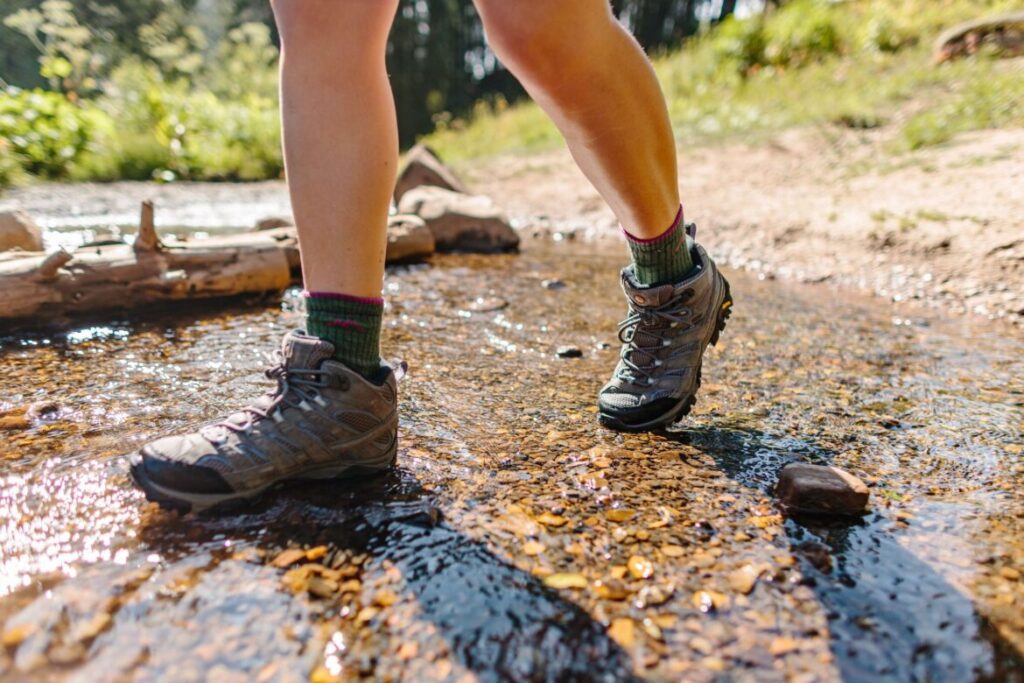Women's Hiking Footwear for Unstoppable Adventures
Women who are passionate about hiking understand the importance of choosing the right footwear for a comfortable and safe outdoor experience. This detailed buying guide aims to assist them in exploring the world of hiking footwear specifically designed for women, delving into various types, features, benefits, and drawbacks. To make the decision process smoother, the guide also offers specific examples of top-performing hiking shoes and boots.


Importance of Choosing the Right Hiking Shoes
Selecting the perfect pair of hiking shoes is essential for anyone looking to tackle trails with confidence and comfort. A well-chosen pair can significantly impact your overall hiking experience, as it plays a crucial role in various aspects.
Firstly, a well-fitting, supportive, and durable shoe helps prevent common hiking issues like blisters and foot pain. By choosing a shoe that fits snugly and offers ample cushioning, you’ll minimize friction and discomfort during long hikes.
Secondly, the right hiking shoes can reduce the risk of injuries. With proper support and shock absorption, your feet and ankles will be better protected against strains and sprains. This is particularly important when carrying heavy loads or navigating uneven terrain.
Additionally, a quality pair of hiking shoes will provide stability on various types of terrain. Whether you’re traversing slippery surfaces or steep inclines, a shoe with excellent traction will help you maintain balance and avoid slips and falls.
Protection against outdoor obstacles is another crucial factor to consider. The right hiking shoes will shield your feet from hazards like rocks, roots, and sharp objects. A sturdy toe cap and reinforced materials can help prevent injuries and ensure the longevity of your footwear.
Lastly, the right hiking shoes will contribute to a more enjoyable hiking experience overall. Comfortable and well-protected feet allow you to focus on the beauty of nature and the thrill of exploration, rather than being distracted by discomfort or fear of injury.
Factors to Consider When Choosing Hiking Footwear for Women
- Type of hiking: Consider the terrain and length of your hikes. Light hiking shoes are suitable for day hikes on well-maintained trails, while mid-cut or high-cut boots offer more support and protection for backpacking trips and rugged terrain.
- Fit and comfort: Look for a snug fit in the heel and enough room in the toe box for your toes to move freely. Always try on shoes with the socks you plan to wear while hiking.
- Support and stability: Choose shoes with good arch support and a stable platform, especially if you’re carrying a heavy backpack.
- Traction: Opt for hiking footwear with a high-quality rubber outsole and multidirectional lugs for optimal grip on slippery or uneven surfaces.
- Weather conditions: Waterproof shoes are essential for wet conditions, but breathable shoes are preferable for hot and dry climates.
Different Types of Hiking Footwear and Their Features
- Trail running shoes: These lightweight, low-cut shoes prioritize flexibility and traction. They’re perfect for well-groomed trails and short day hikes. However, they offer minimal support and protection.
Example: Salomon Women’s Speedcross 4 is known for its aggressive grip and precise foothold, making it an excellent choice for trail running. - Light hiking shoes: These low-cut shoes provide more durability, support, and protection than trail running shoes. They’re suitable for day hikes on moderate terrain.
Example: Merrell Women’s Moab 2 Ventilator is a popular light hiking shoe with excellent breathability and comfort. - Hiking boots: Mid-cut or high-cut boots offer better ankle support, stability, and protection against rocks and roots. They’re ideal for longer hikes, backpacking trips, and challenging terrain.
Example: KEEN Women’s Targhee III Mid Waterproof Boot provides a perfect balance between support, comfort, and performance. - Mountaineering boots: Designed for technical alpine climbing and winter hiking, these heavy-duty boots offer maximum support, protection, and insulation.
Example: La Sportiva Women’s Nepal Cube GTX is a lightweight yet robust mountaineering boot with outstanding insulation and waterproofing.
Key Components of Hiking Footwear
- Upper: The upper part of the shoe determines its durability, water resistance, and breathability. Materials like full-grain leather offer excellent durability but may be less breathable, while synthetic materials like nylon are lighter and more breathable but less durable.
- Midsole: The midsole provides cushioning, support, and shock absorption. EVA (ethylene vinyl acetate) is a lightweight and affordable option, while PU (polyurethane) is more durable and offers better support.
- Outsole: The outsole is responsible for traction and protection. High-quality rubber and multidirectional lugs ensure optimal grip on various surfaces.
- Insole: The insole can affect comfort, support, and cushioning. Some hiking shoes have removable insoles, allowing you to customize the fit and feel.
Weather Considerations
- Waterproofing: Waterproof membranes like GORE-TEX keep your feet dry in wet conditions but can reduce breathability. If you frequently hike in wet climates, consider the Oboz Women’s Bridger B-DRY Hiking Boot for reliable waterproofing.
- Breathability: In hot and dry conditions, breathability is crucial to prevent overheating and excessive sweating. The Merrell Women’s Moab 2 Ventilator excels in this aspect.
- Insulation: For cold weather hiking, opt for insulated boots like the Columbia Women’s Bugaboot Plus IV Omni-Heat, which offers excellent warmth and protection against the elements.
Finding the Right Fit
To ensure a proper fit, follow these tips:
- Try on shoes later in the day, as feet tend to swell throughout the day.
- Wear the socks you plan to use while hiking.
- Measure both feet and choose the size based on your larger foot.
- Make sure there’s enough room in the toe box for your toes to wiggle freely.
In conclusion, finding the right hiking footwear for women involves assessing your specific needs, understanding different types of shoes and their features, and prioritizing factors like fit, comfort, support, and weather considerations. By following this comprehensive guide and researching specific models, you’ll be well-equipped to find the perfect pair for your hiking adventures.
